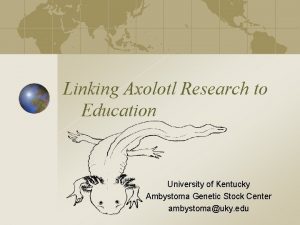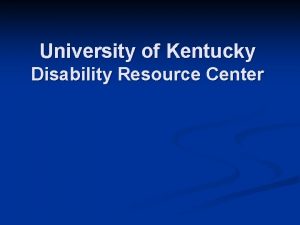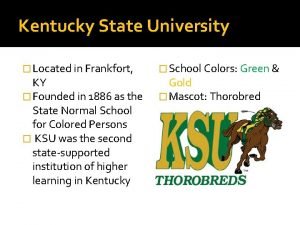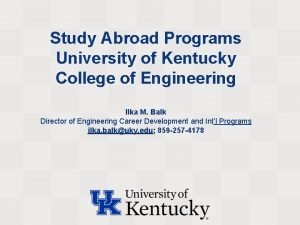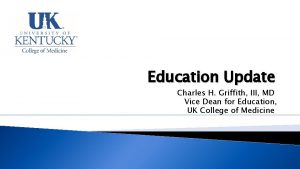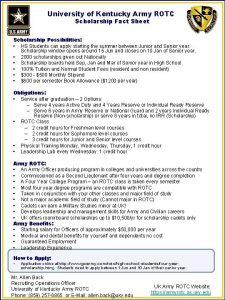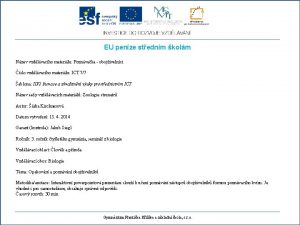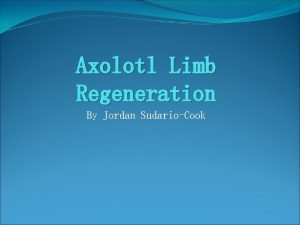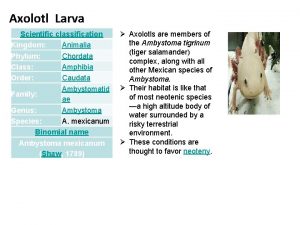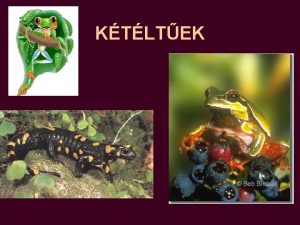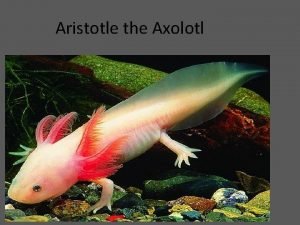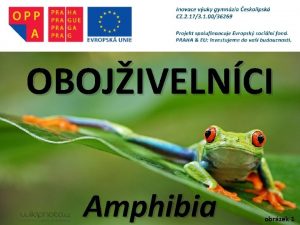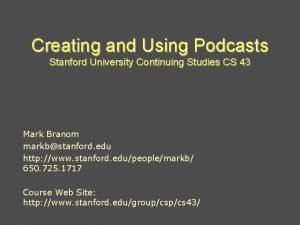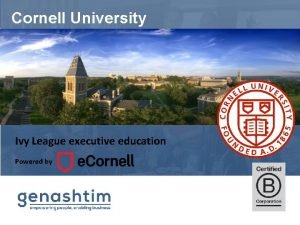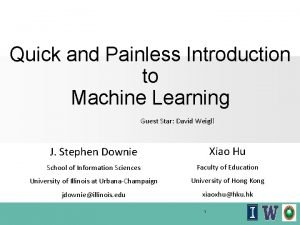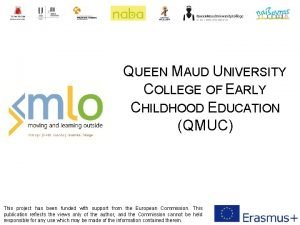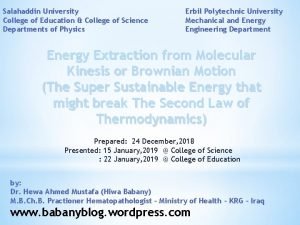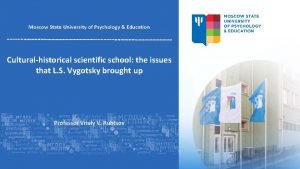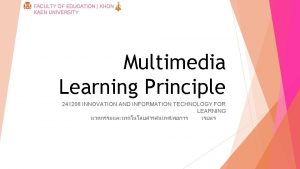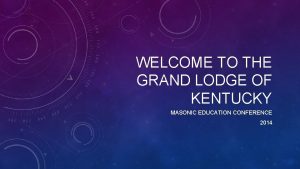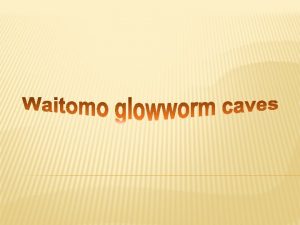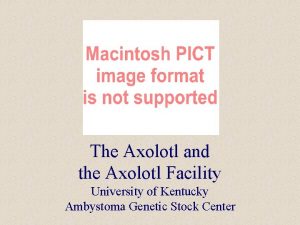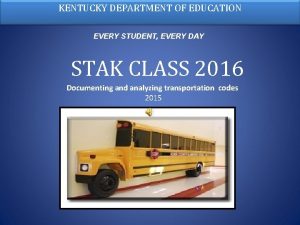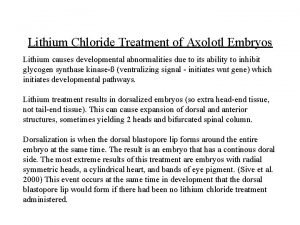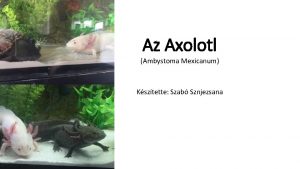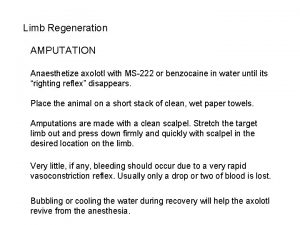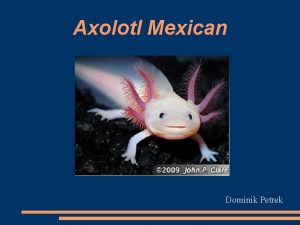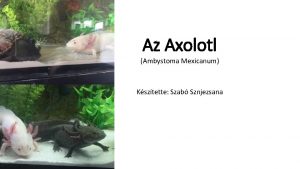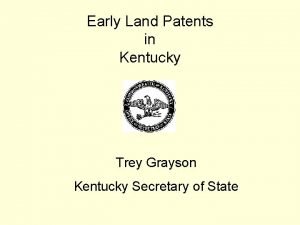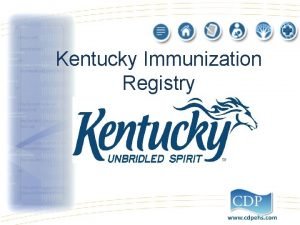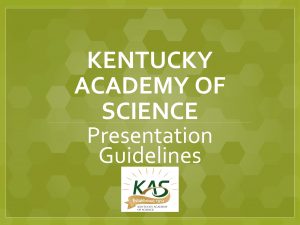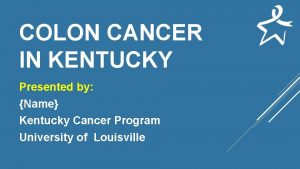Linking Axolotl Research to Education University of Kentucky































- Slides: 31

Linking Axolotl Research to Education University of Kentucky Ambystoma Genetic Stock Center ambystoma@uky. edu

Ambystoma mexicanum Mexican Axolotl

Ambystoma tigrinum Tiger Salamander




gills and lungs Wild-type Axolotls




One week old larvae white and albino

Wild-type Albino Three pigment cells • Melanophores - dark pigment • Iridophores - reflective pigment • Xanthophores - yellow pigment White

Biology Research Fields using Axolotls as Model Systems Developmental biology Includes embryology and regeneration studies Endocrinology Evolutionary biology and systematics Immunology Neuroscience Physiology

Advantages of the Axolotl in Research Breeds readily in captivity

Advantages of the Axolotl in Research Axolotls can regenerate numerous parts of their bodies, including the brain, spinal cord, jaw, tail, and fore and hind limbs throughout embryonic, larval and adult life.

Axolotls can regenerate: • Tail • Limbs • Retina • Intestine • Upper and Lower Jaws • Liver • Kidney • Heart We study urodele regeneration because it gives us insight into posttraumatic tissue repair, and limb formation at development.

Advantages of the Axolotl in Research Regeneration Axolotls have large embryos that tolerate microsurgery, and microinjection Axolotl cells are 3 X larger than corresponding cells in other species. There’s also about 8% more DNA content. This is good for: Cellular biology, watching chromosome movements, cell counts, histology

Advantages of the Axolotl in Research Regeneration Large embryos Availability of molecular reagents, such as antibodies for immunocytochemistry, cloned genes for in situ hybridization, and DNA libraries for studies of gene expression and regulation.

Advantages of the Axolotl in Research Regeneration Large embryos Availability of molecular reagents Amphibians in general, and axolotls, in particular have large cells which are well-suited for single-cell physiology

Advantages of the Axolotl in Research Regeneration Large embryos Availability of molecular reagents Large cells Several well characterized mutant strains of axolotls are available, such as cardiac, eyeless and short-toes. In addition, because axolotl can be crossed to other closely related tiger salamander species, it is possible to identify QTL and test candidate genes for natural, segregating variation.

Advantages of the Axolotl in Research Regeneration Large embryos Availability of molecular reagents Large cells Availability of mutants: pigments, neural crest, cardiac non-functioning, eyeless and short-toes Large body of publications from over a century of research with axolotls

Interest by Teachers Preschool - High School Germany Australia Great Britain United States Canada Japan

Use of axolotls in college level biology courses Undergraduate/ Graduate levels Primarily Developmental Biology Courses

People all over the world are interested in axolotls Because there is support for the research need, there is a surplus of this “endangered species” and this surplus can go out to classrooms of all ages, preschool through high school. We are in a unique position to be able use this to teach lessons in ecology and conservation to an audience that can truly learn the lessons, the children.

What is the Ambystoma Genetic Stock Center? The goals of the Ambystoma Colony are to supply axolotls at all stages of development to meet the research needs of the scientific community - funded by the National Science Foundation UKAC is a center for collaboration and shared findings, both for technical procedures Supplied 170 different research and educational institutions in the last 3 years.

Ambystoma Colony Outreach Program School groups tours of facility Visits to schools/ science fairs/ museums with live materials and materials to go home Live materials (embryos and larvae) placed in schools as pets and for experimental observation.

Results Hundreds of students go through our facility each year Thousands of students have gone through over the last 10 years since we have been doing outreach Materials went home to parents and siblings, so possibly 3 X people were effected by the program.

Results Excitement for science Excitement for the real world Concern for endangered species/axolotls Acknowledgement that everyone’s actions effect the environment and animals, like axolotls Interest in conservation projects

Contact Information Laura Muzinic, Associate Director Chris Muzinic, Curator 859 -323 -5679 ambystoma@uky. edu Material and Supplies: http: //bigapple. uky. edu/~axolotl/


 University of kentucky axolotl
University of kentucky axolotl Dynamic picture
Dynamic picture Disability resource center uky
Disability resource center uky Kentucky state university mascot
Kentucky state university mascot Eastern kentucky university aviation
Eastern kentucky university aviation University of kentucky study abroad programs
University of kentucky study abroad programs University of kentucky college of medicine
University of kentucky college of medicine University of kentucky rotc
University of kentucky rotc Food chain photosynthesis
Food chain photosynthesis Axolotl albín
Axolotl albín Axolotl
Axolotl Axolotl age size chart
Axolotl age size chart Kétéltűek keringése
Kétéltűek keringése Axolotl libreria
Axolotl libreria Aristotle axolotl
Aristotle axolotl Axolotl mexický chov
Axolotl mexický chov 沈榮麟
沈榮麟 Stanford continuing studies certificate
Stanford continuing studies certificate York u my file
York u my file Cornell executive education
Cornell executive education The education university of hong kong
The education university of hong kong The education university of hong kong
The education university of hong kong Queen's university early childhood education
Queen's university early childhood education Schumann weingarten
Schumann weingarten Ben's dreams of a university education went by the board
Ben's dreams of a university education went by the board Oxford continuing education
Oxford continuing education Salahaddin university college of science
Salahaddin university college of science Moscow state university of psychology and education
Moscow state university of psychology and education Faculty of education khon kaen university
Faculty of education khon kaen university Grand lodge of ky annual meeting
Grand lodge of ky annual meeting Kentucky tornado alley
Kentucky tornado alley Kentucky glow caverns
Kentucky glow caverns
